Continuing from the Sungai Lembing Tin Museum. Click here for the pre-journey.
Apologized as we took a long time to continue the story about our trip to Pahang. I honestly did not intend to continue writing about the “carpacker” project from Kuantan to Kemaman because this post is several years old, and I feel that the information about good food places and others is no longer current.
However, the information for this tin mine is still relevant, and its condition is still the same, so I feel it is best to take advantage of my free time by documenting memories for our children to read when they grow up.
Known as the Sungai Lembing Tin Mine or originally Tai Pei Tong Mine, this is an actual tin mine located not far from the Museum, only about 500 meters away. Due to the overcast weather indicating heavy rain, we hurried to this mine. Those who have read the previous post will know that we initially headed here and not to the Museum. This is because when we arrived, the mine was closed during lunch hour (it is also closed every Monday and may be temporarily closed due to the pandemic – call 09-541 1480 for confirmation).
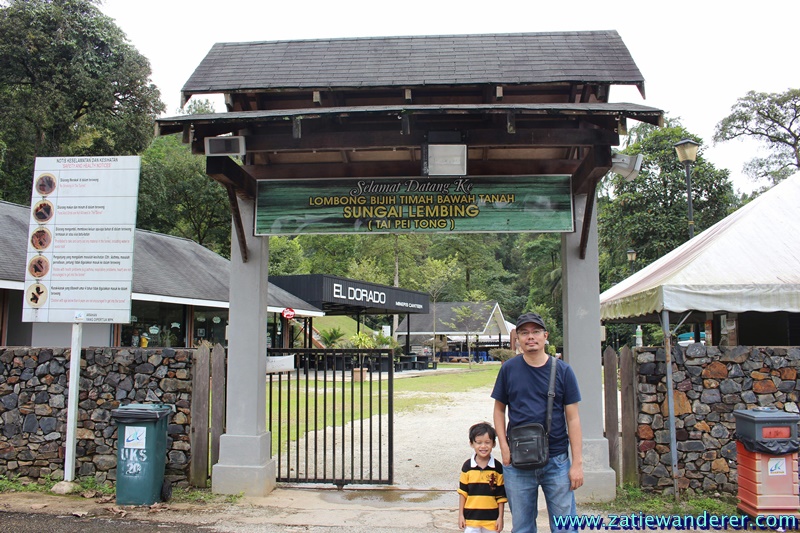
The entrance fee is MYR15.90 for adults and free for children under seven years old and needs to be paid at the entrance.

As soon as we entered the mine’s compound, we were greeted by a restaurant named El Dorado, resembling the name or language of Mexico because it has the largest tin mine in the world. This canteen is supposedly built for miners here, although mining activities have long ceased. This is to give the impression that we are really at a real mining site.
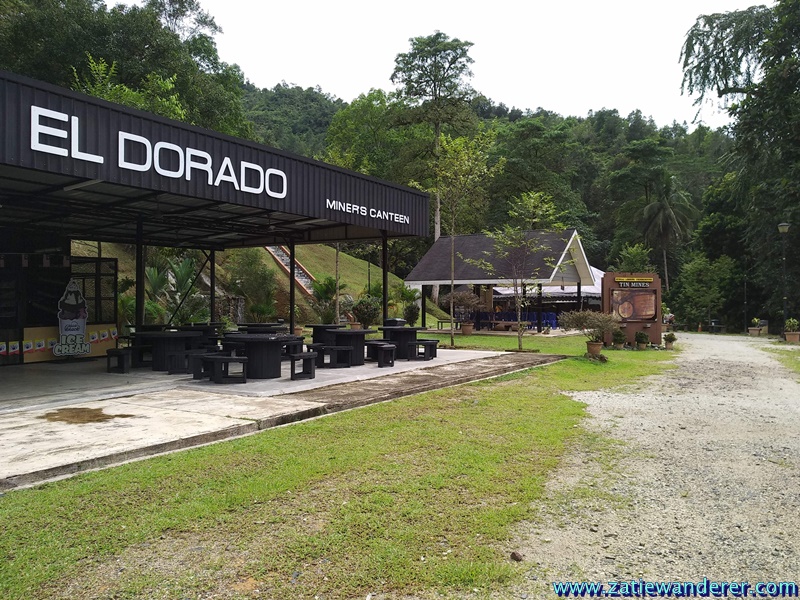
Before going deeper, we took some pictures as proof that we were there.
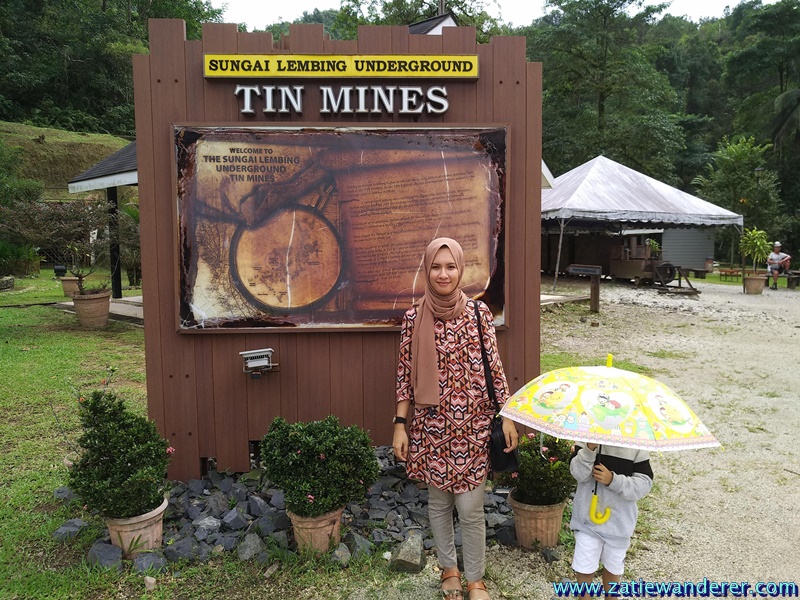
Initially, I thought this mini train was just a replica. Turns out I was wrong. This is the actual train used by miners to enter. It can enter only on certain levels. And now it is used to bring tourists to experience being a miner and riding the mini train into the mine. In addition to carrying miners and tourists, it was previously used to transport tin ore out.
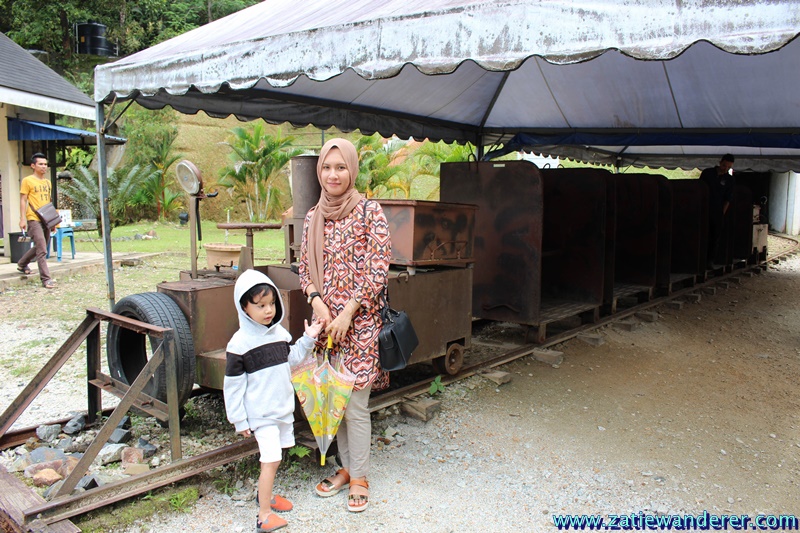
Maybe this is how a miner’s uniform looks, complete with boots and safety helmets. Is this really their appearance? I don’t think so. Maybe it’s just for decoration.

To ride this mini train inside, there is a schedule provided. It will only bring visitors inside if the number of passengers is full. In front of me, I see the train driver starting the engine. We were quite excited for two reasons. First, this was our first time entering a world-famous mine, and second, it was also our first time riding a mini train.
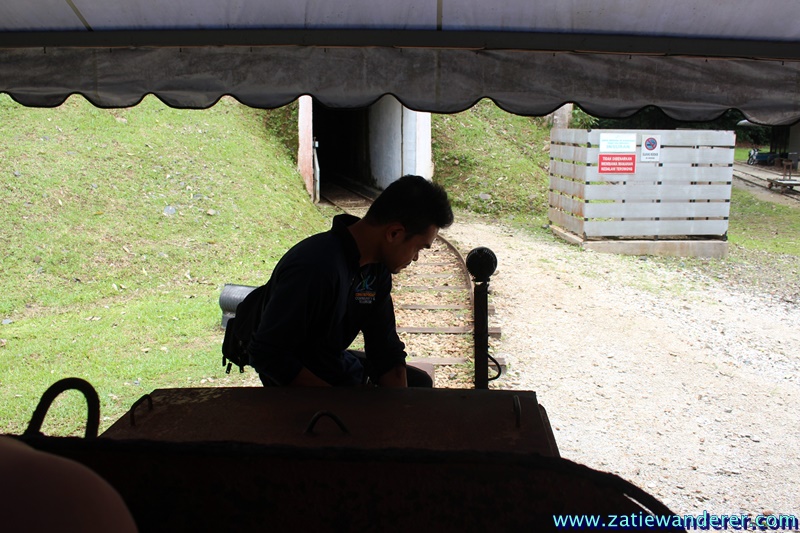
We didn’t wait long because there were quite a few visitors at that time. The driver in front took us in. I purposely chose to sit in the front row to get an experience worth the ticket we paid for. Here, our excitement began to rise. Aqif couldn’t sit still, not because of fear but because of too much fun. This is what it looks like inside the mine when we first enter this tunnel. At first, there were lights, and the rest needed to use flashlights brought by ourselves.
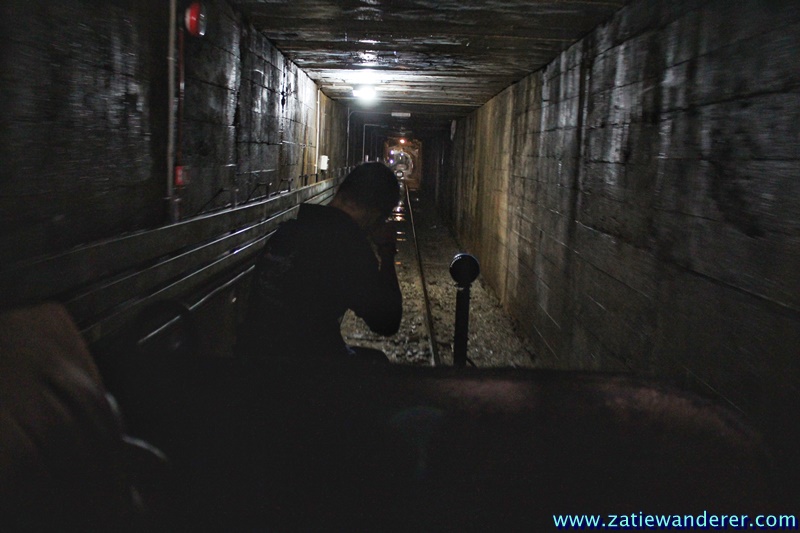
After a while, the fluorescent lights were no longer visible. Within 10 meters ahead, this train would stop, and we had to get off and walk straight ahead to the main exhibition area.
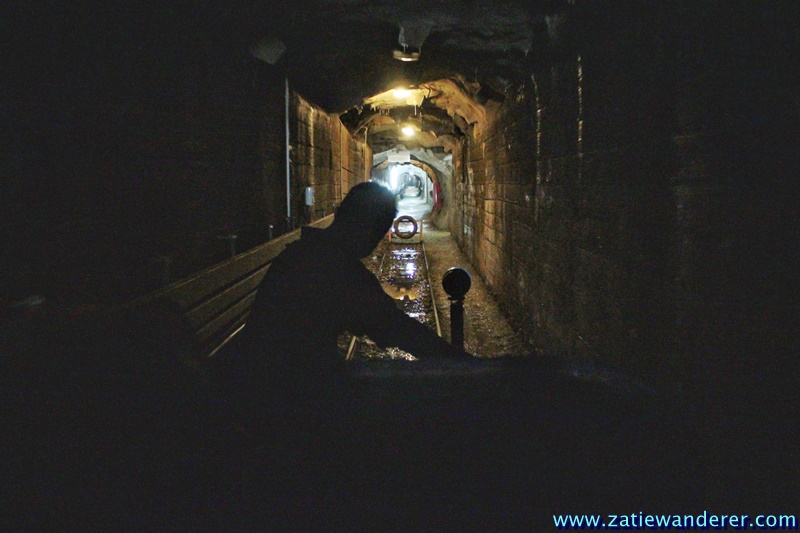
As we started walking, I suggested readers who want to come here wear slippers, and short pants, bring a small umbrella, and a bright flashlight. The umbrella helps because tunnel ceilings are dripping with water from the hill above. Short pants help because the floor is always wet and sometimes there are ankle-deep puddles of water.
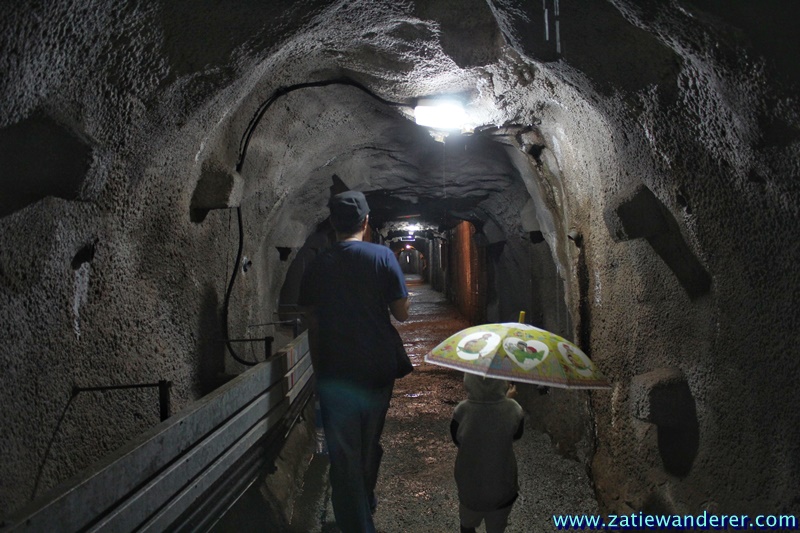
Look at the picture below. You can see the wet floor and stalactites growing on the upper part of the tunnel ceiling. At the beginning of this tunnel, there are still bright lights.
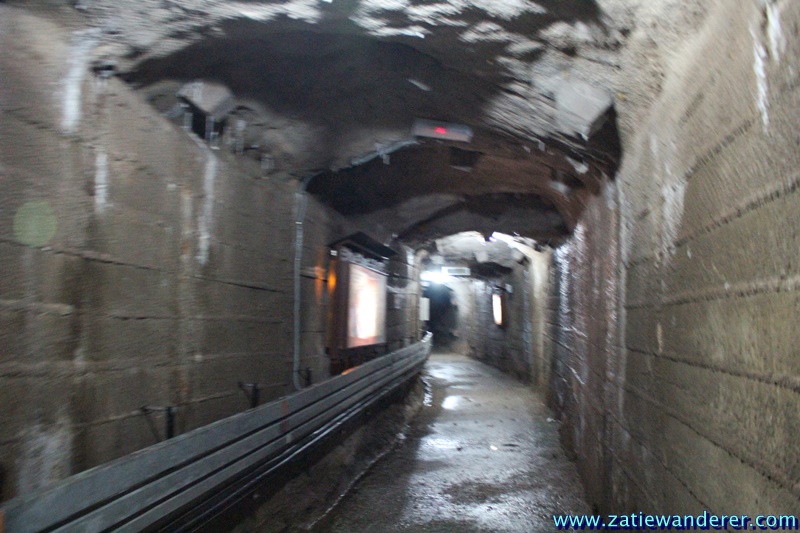
We continued walking forward because it was said that at the end, there was the main exhibition in this mine. It was quite suspenseful because we didn’t know if we kept walking forward, what would the condition be like at the end. This is common for visitors and worsens if visitors have claustrophobia, a type of phobia in narrow and closed places. Fortunately, none of our family members have this type of phobia.
The atmosphere and conditions inside are quite dim; some parts are semi-dark and some are pitch black. The humidity here is quite high, added to the drizzling rain outside. The air smells like the smell of the road after rain. The deeper into the mine, the air feels a bit thin.
Because there were many visitors here, the silence was not felt. If it were just us inside and whispered something, it would be heard from 5 meters away.

Take a look at how many visitors are behind us. Because we were the front passengers on the mini train earlier, it felt like we were leading this tour. The others relied solely on the flashlight from their phones. Before coming here, I read about the mine and its condition, so I prepared a flashlight to ease our movement.
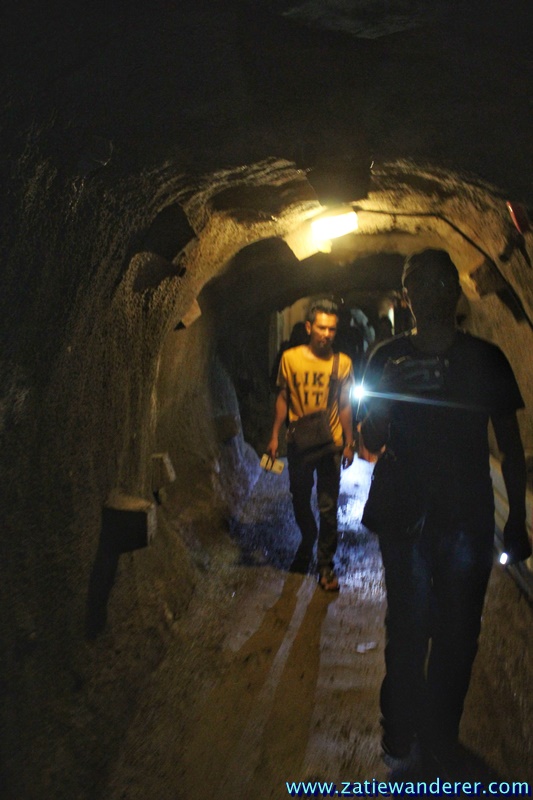
While walking in the tunnel, we saw a pathway that was closed, probably for safety reasons. Maybe its ceiling is not very stable and could be dangerous. This is a real tunnel used by miners, and you need to crawl to get in. Imagine if you were the miners here. Would you dare?
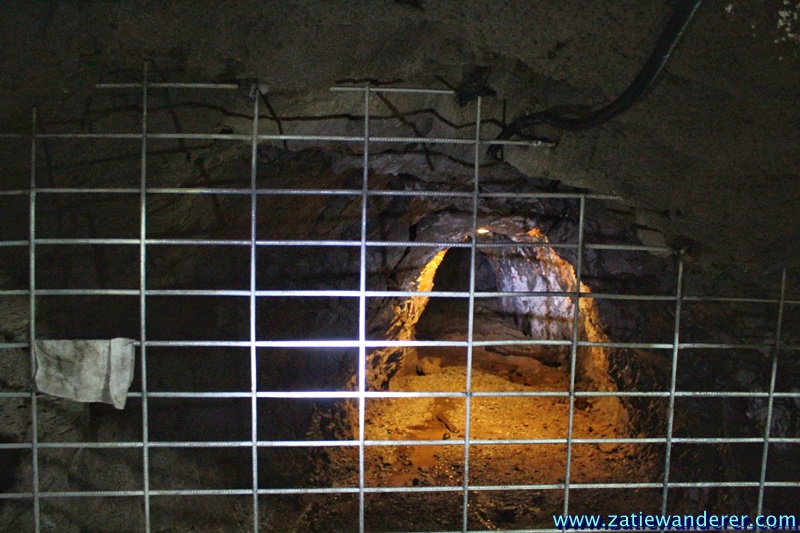
Still walking, wondering where and when we will arrive at the exhibition area. Worried that the further we go inside, the more we might get lost. This is because most tin mines have winding tunnels like a maze.
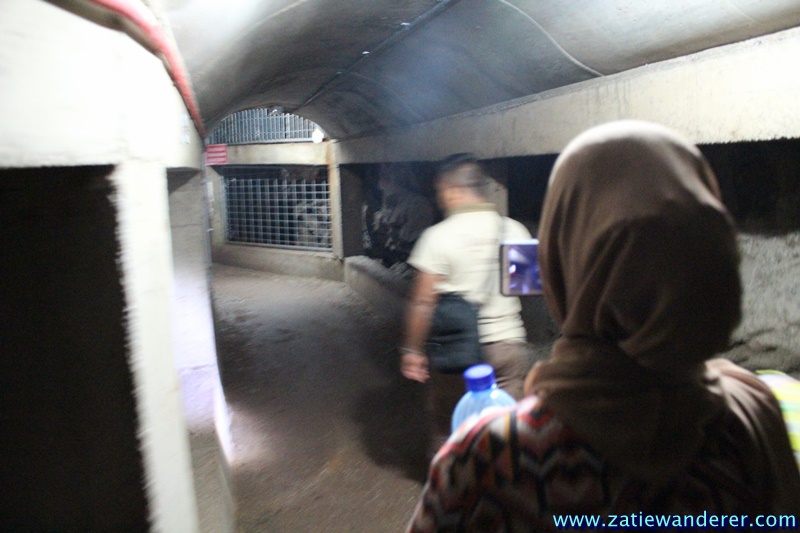
Pretending as a tour leader and pointing to a stalactite to show it to our tour group.
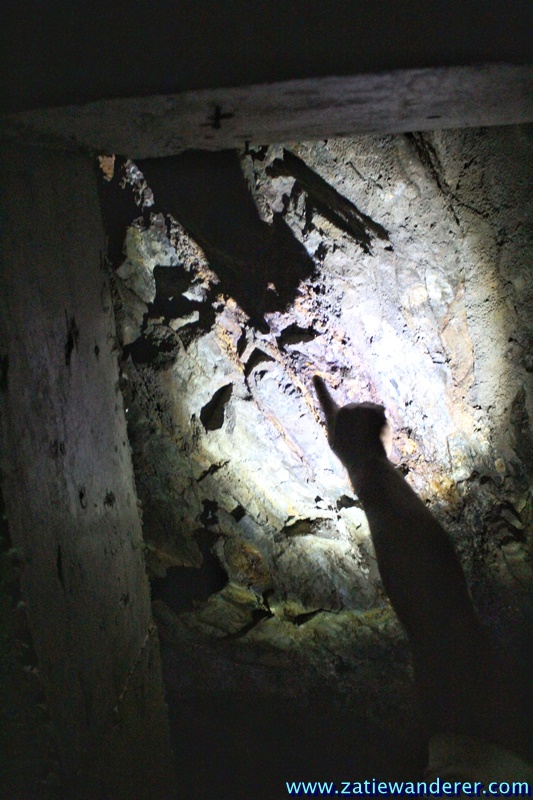
Okay, this is the main exhibition in this tin mine. Did you know there is a legend here called the Legend of the One Million Ringgit Hole? What is that?
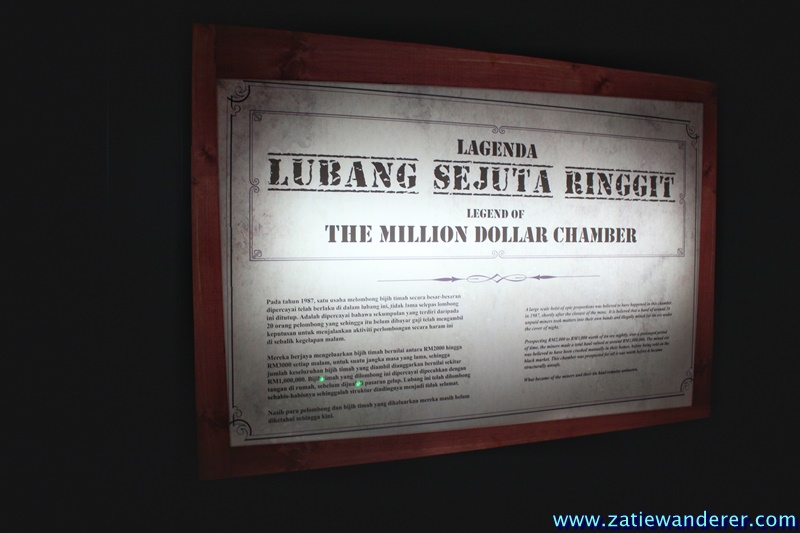
Legend of the One Million Ringgit Hole
Once upon a time in 1987, right after this mine was closed, a group of 20 unpaid miners decided to carry out illegal mining activities at night.
Every night, they successfully mined tin worth between MYR2000 to MYR3000 until the total amount of tin they mined reached MYR1,000,000! How did they mine? It is said that they broke it by using tools at home and sold it on the black market.
Due to extensive mining, the structure of its walls became unsafe. To this day, the fate of the miners and the tin they sold remains unknown.
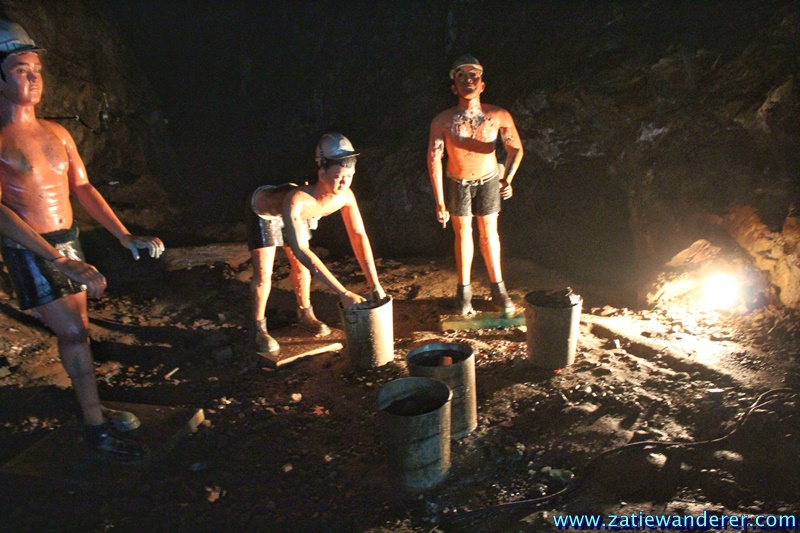
Some of the holes they dug.
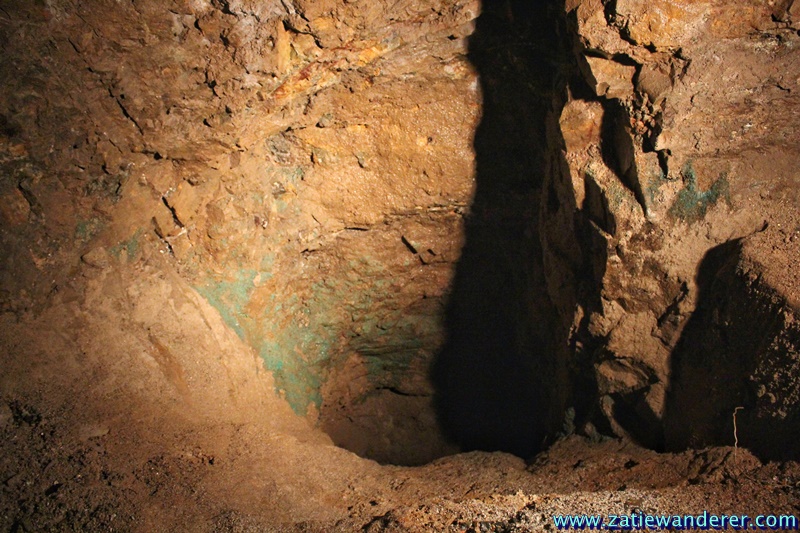
Another pathway was dug behind them. Look how high the cave ceiling is here.
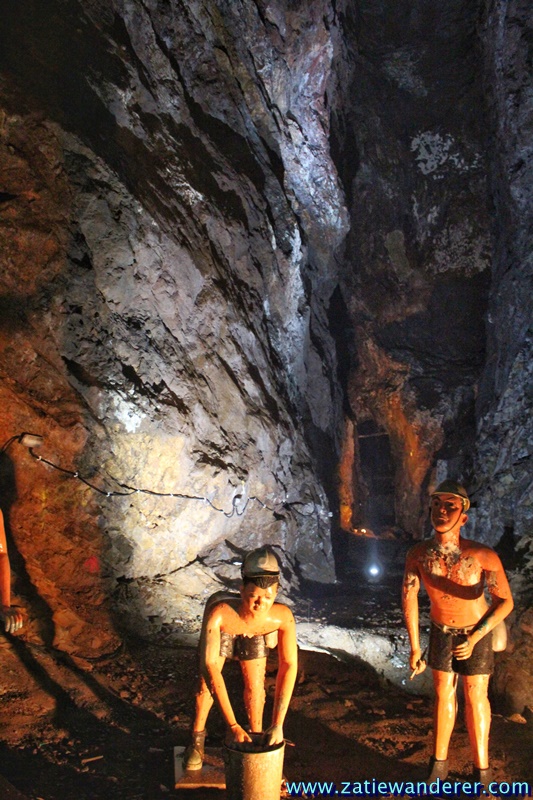
The attempt to take a full picture was limited. There’s more space on the left side of the picture.
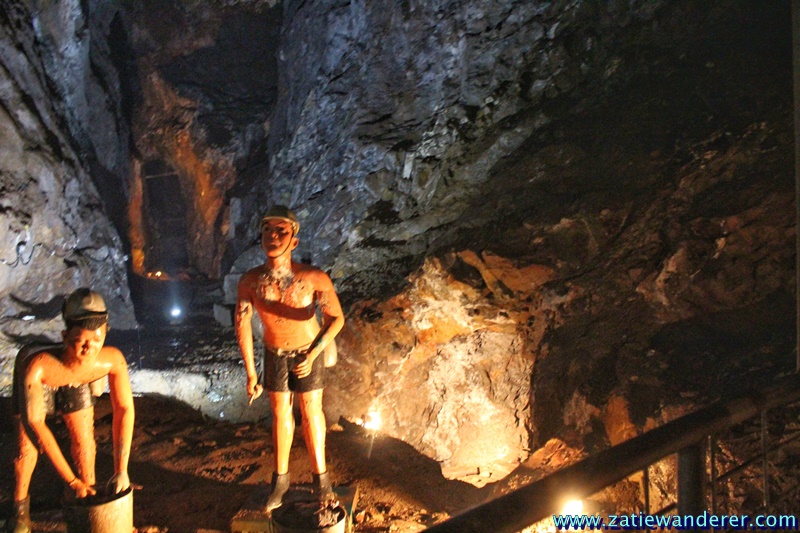
At the side of this area, there is a small tunnel path that is completely closed. Maybe its ceiling structure is dangerous and could collapse at any time.

Let’s check out what it’s like inside a small tunnel.
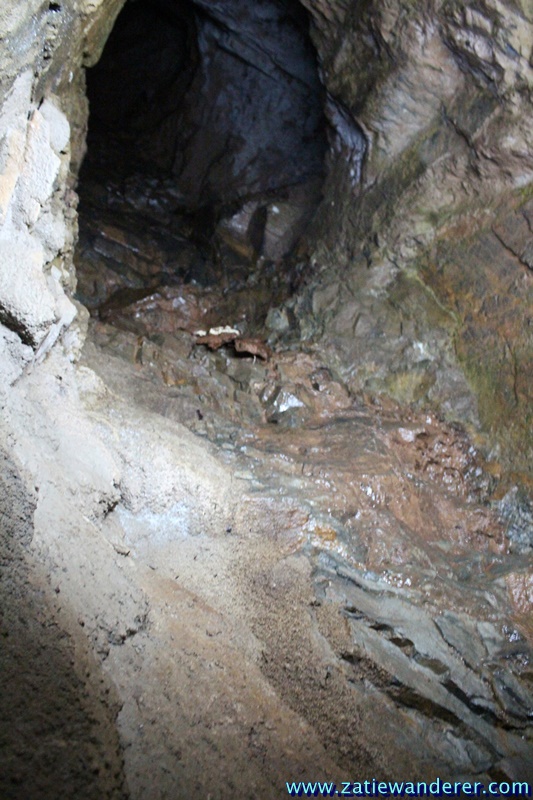
Stalactites shaped like melted cheese banana fritters.

Lorong Myah
We entered Lorong Myah (Myah Lane). It is said that there is a lift to descend 1,400 feet! That’s equivalent to 426 meters or nearly half a kilometer! But we couldn’t find the lift.
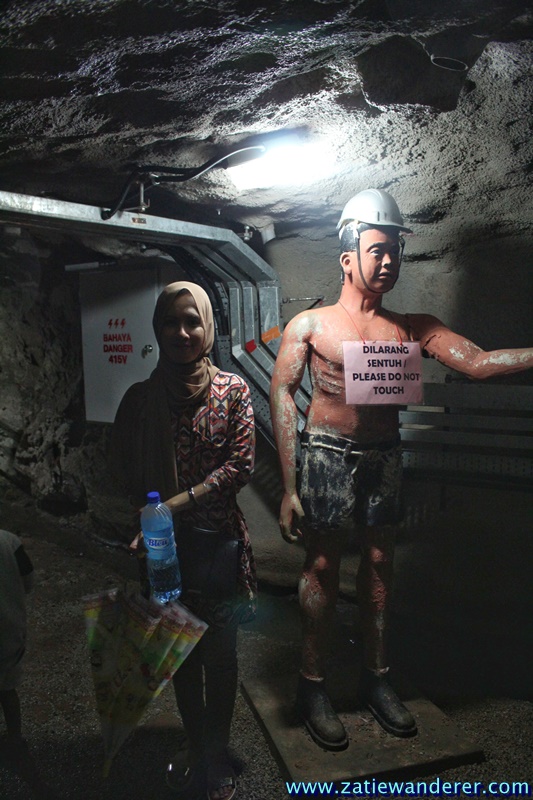
Here’s how the ore was lifted using a wheelbarrow. Note, this is not an ordinary wheelbarrow as its wheels are made of iron similar to a train’s for use on tracks.
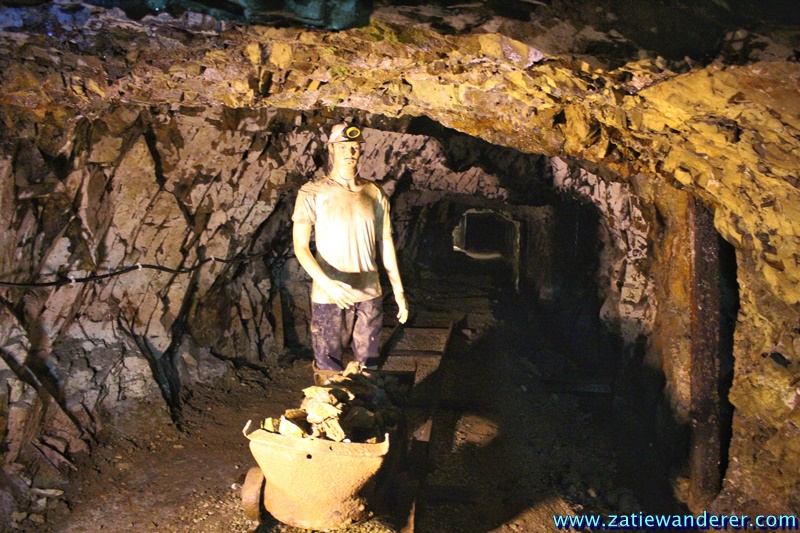
We then walked into another tunnel until reached a crossroad. For the readers’ information, this mine has many levels. Only one level is open to the public.
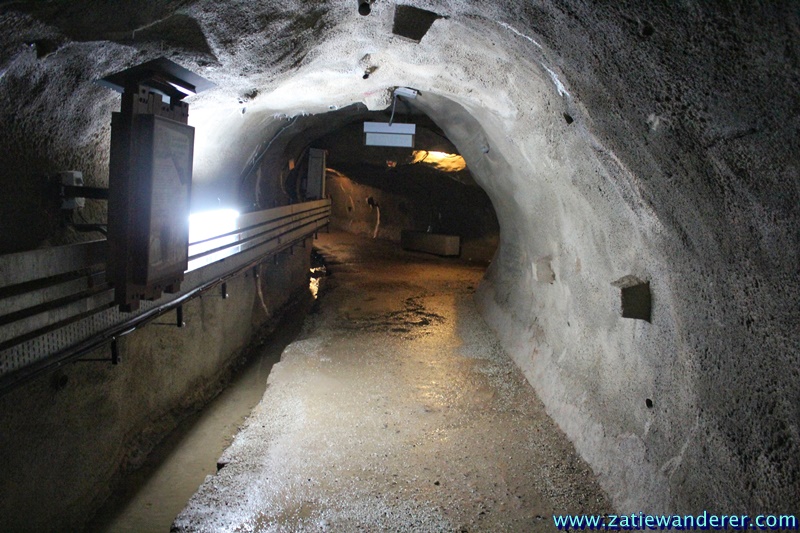
After walking a bit, there was another fork in the road. I started memorizing the paths we took, worried we might get lost.
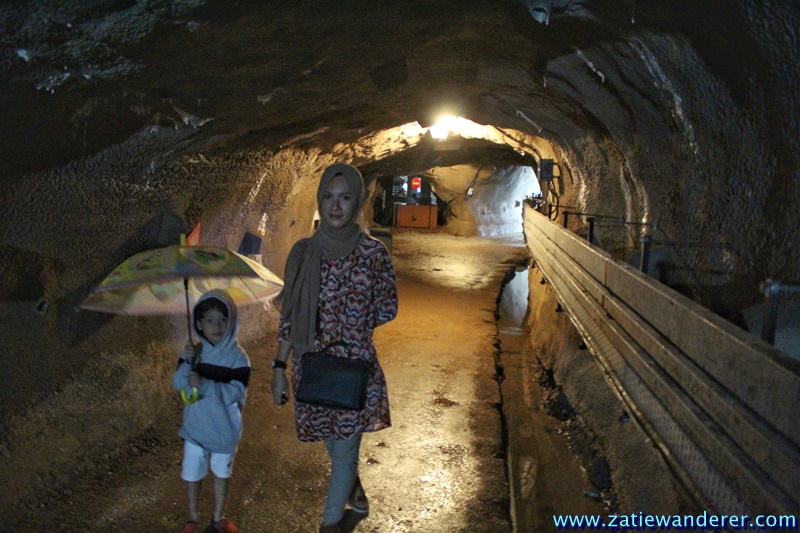
Along this tunnel, the floor is always wet, and the ceiling drips water. Umbrellas are very helpful.
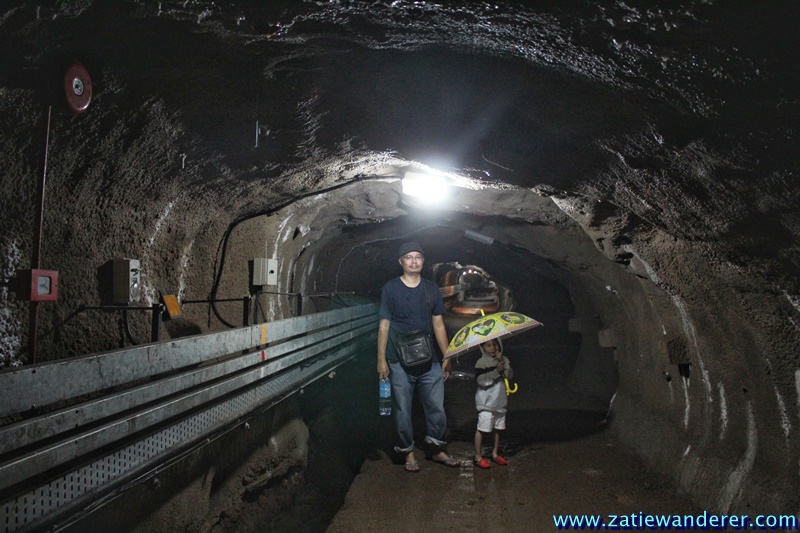
Suddenly, we came across a small tunnel closed to the public. I imagined how it would be if we have to work here and crawl inside. The deeper you go, the narrower it gets, and you might get stuck. Creepy!
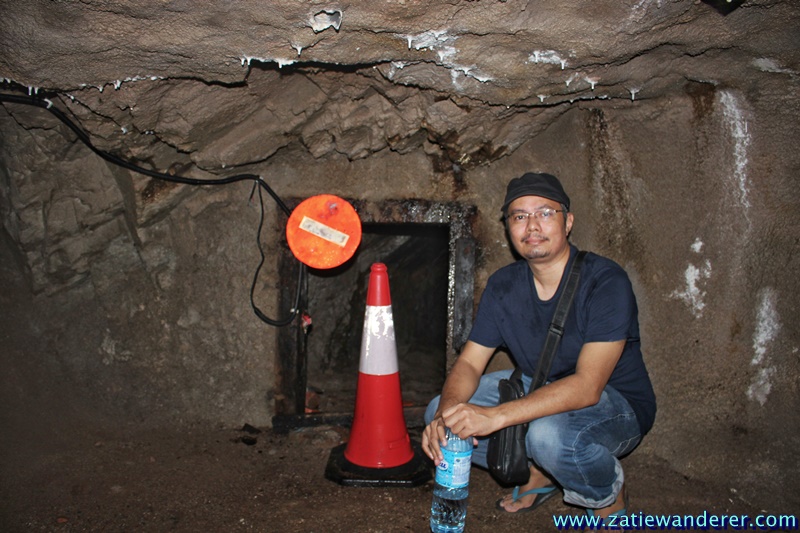
We continued walking deeper and…

We came across the second exhibition here. Visitors can try pulling the pulley and rope there.
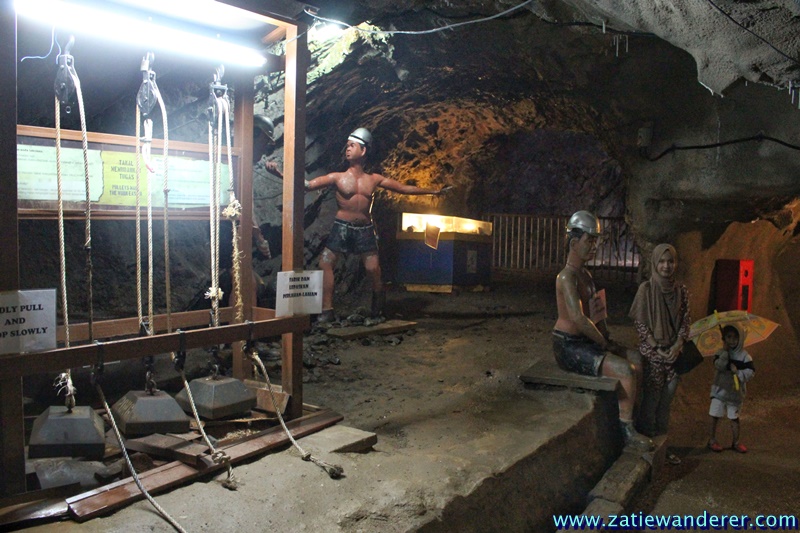
This technique is for lifting crushed rocks here and uses a metal weight. Same concept as an elevator.
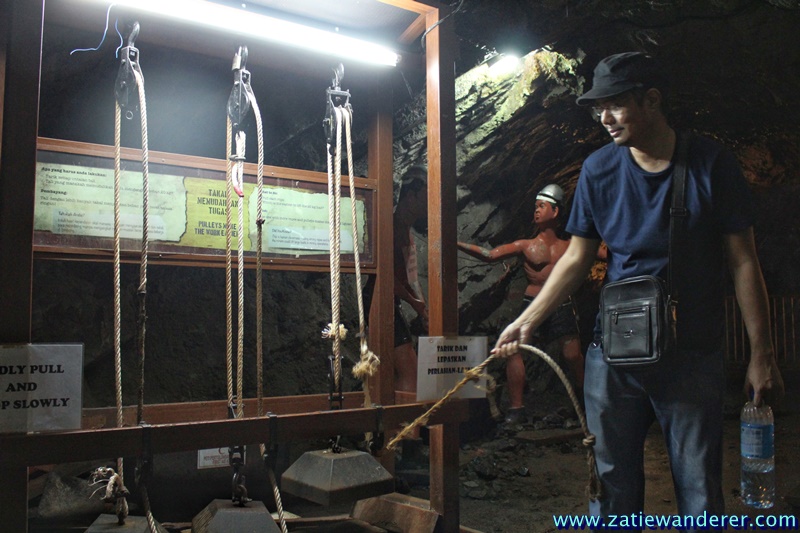
Wow! I suddenly saw a hole slightly larger than the previous one. This time, I shone the flashlight inside and took a picture. This path is also closed to the public.
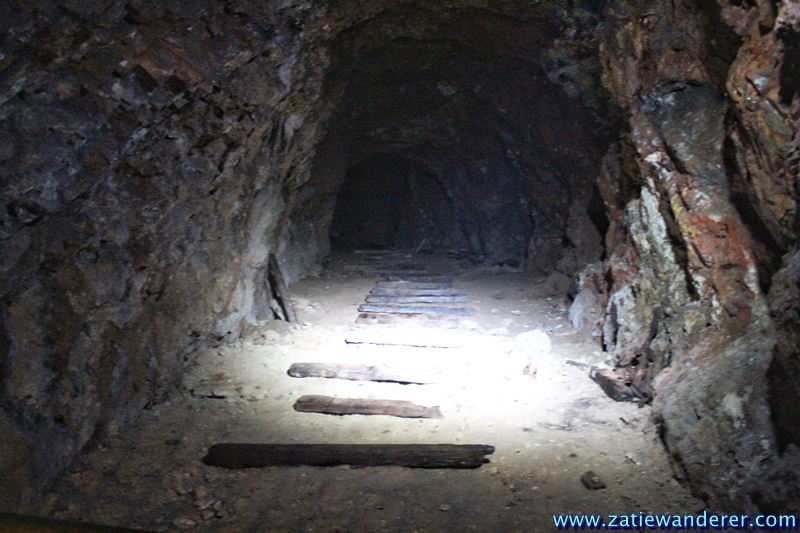
And another small tunnel we found. There are many risks for workers here. The ceiling could collapse at any time because it becomes soft due to rainwater seeping into the ground from the hill above.
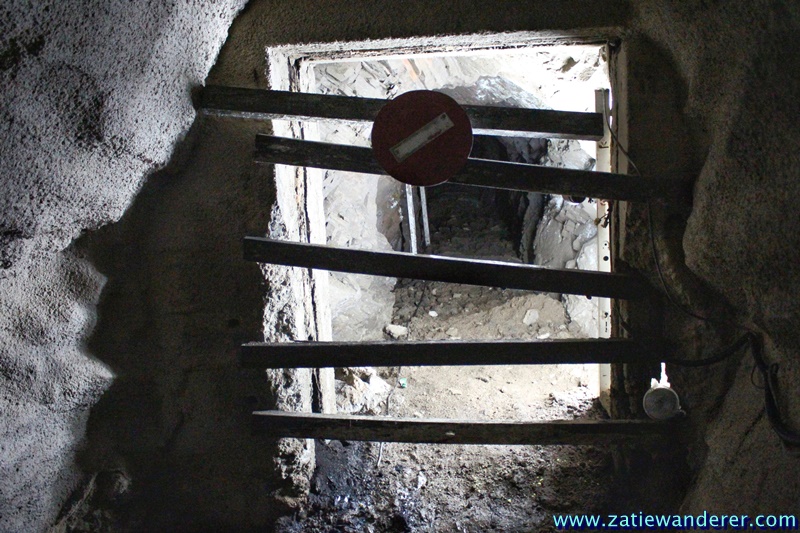
Finally, we walked towards the path of light and returned to the main road, hehe. The place we stood was the entry path of the mini train earlier.
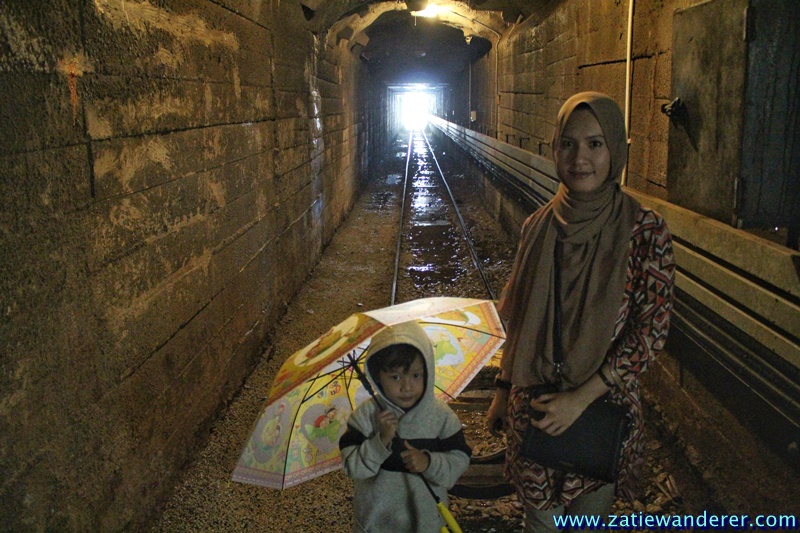
However, to exit from here, you need to take another path. For those who want to come here, be careful not to exit via the mini train track. It’s dangerous if a train comes from the front.
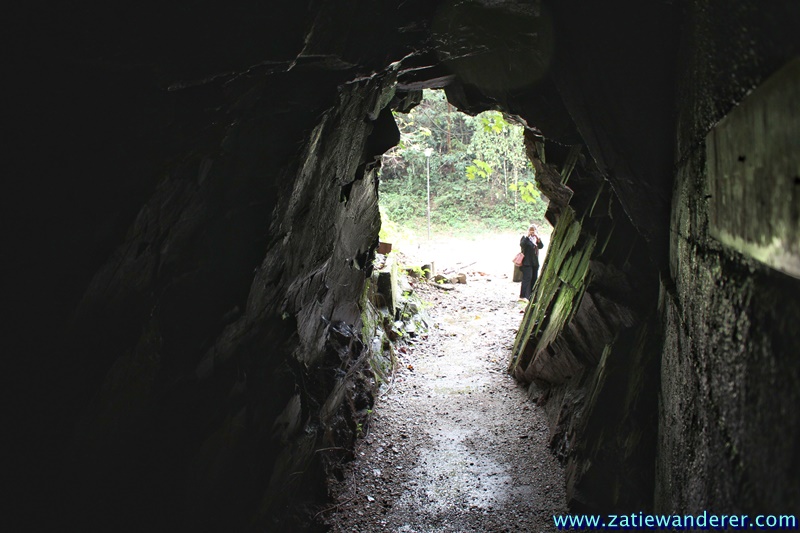
Alhamdulillah, we found the path of light as if our hearts had been polished from dark sins and entered paradise, hehe. Or it could be likened to a newborn baby seeing the light in a bright delivery room. I have a wild imagination.
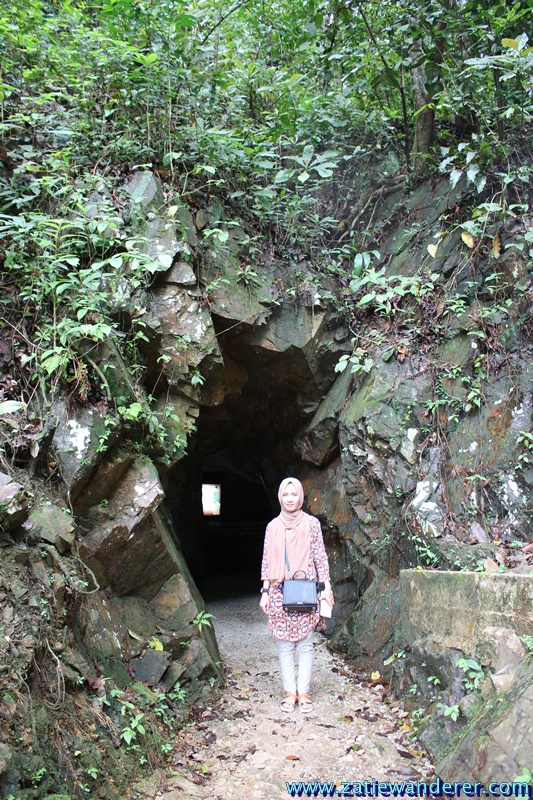
Then, we tried a type of vehicle, which I don’t know what it’s called. With the strength of two people pressing the pedal rods, we tried and indeed, it could move. This vehicle reminds me of the Bamboo Train in Battambang, Cambodia.
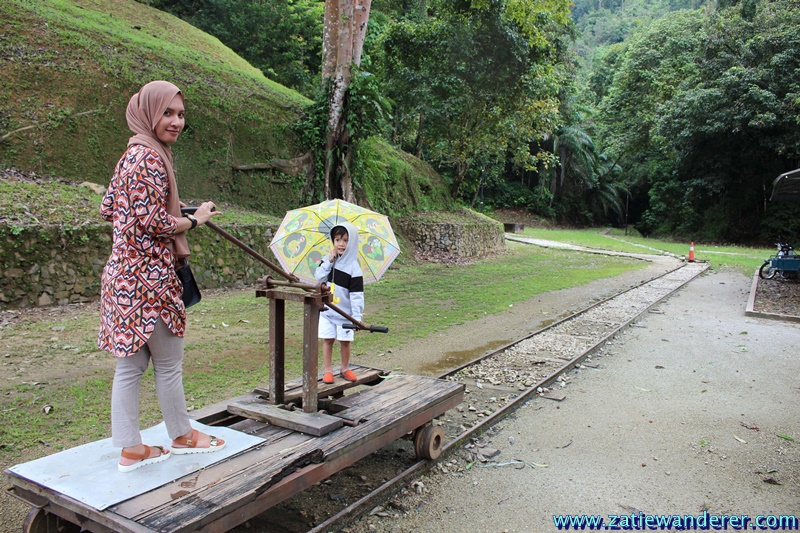
We took photos at the entrance tunnel because we didn’t get a chance earlier. Just fold and roll up your pants and wear slippers. It makes it easier to visit inside.
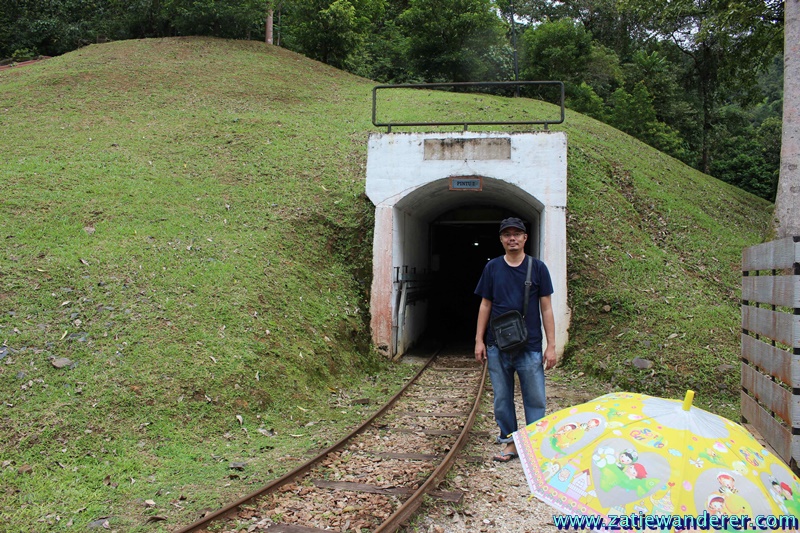
Back to the waiting area to ride the mini train earlier.
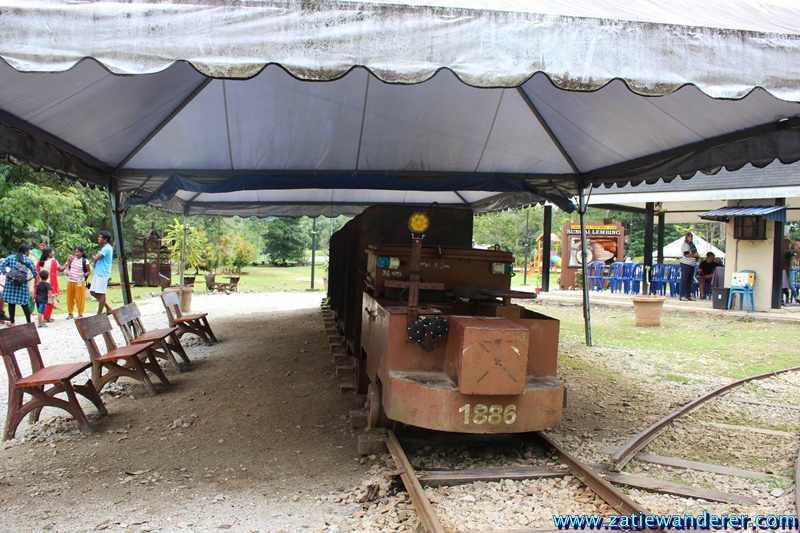
While waiting, Aqif played for a while in the playground provided for free for visitors.
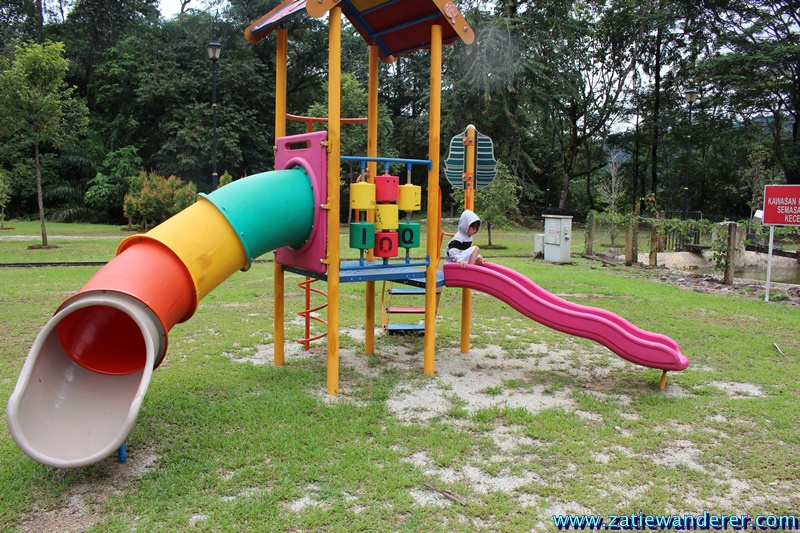
That’s the story of our exploration of the world’s second-largest tin mine. Well worth a once-in-a-lifetime visit.
For the next post, I apologize because it will not be a long entry. Just a summary to complete this “carpacker” project. I hope the place still exists and has a high rating.
To be continued in the next entry, great and interesting places to eat in Kuantan!

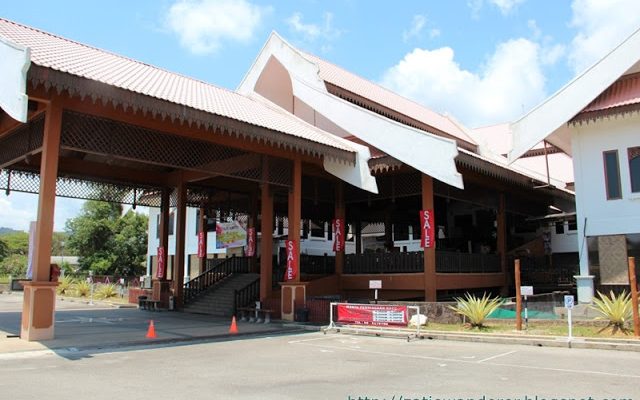
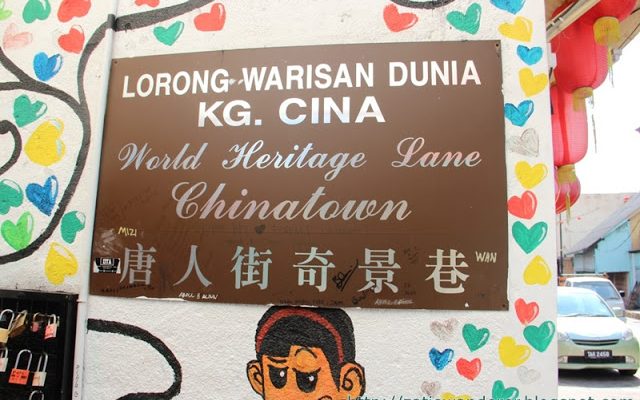
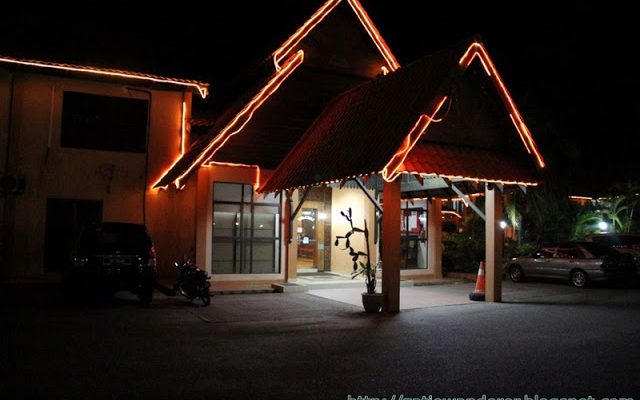
Leave a Reply